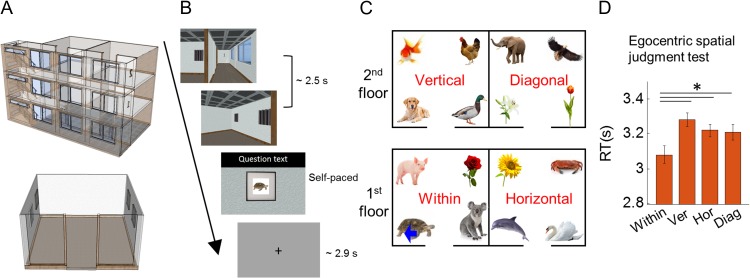Figure 1.
Stimuli and experimental design. (A) Top panel, overview of the virtual gallery building with transparent walls for display purposes. Bottom panel, overview of one room with transparent walls for display purposes. (B) On each trial, participants were virtually transported to one of the paintings from a corridor, and then the participant performed a spatial memory task. During the prescan egocentric judgment test, they were asked to make spatial judgments about the locations of other paintings, for example, “Is the pig on your left?” (mean RT 3.2 s). During the scanning test, they were asked to indicate whether the painting was the correct one or not for that location, “Is this picture correct?” (mean RT 1.3 s). (C) An example layout of 16 paintings located in the 4 rooms of the gallery. The within, vertical, horizontal and diagonal rooms were defined relative to a participant’s current location. In this example, the participant was standing in front of the turtle painting (blue arrow). (D) Spatial judgments were significantly faster for the within-room (Within) condition. There were no differences between vertical (Ver), horizontal (Hor), or diagonal (Diag) rooms. Error bars are SEM adjusted for a within-subjects design (Morey 2008). *P < 0.05.

